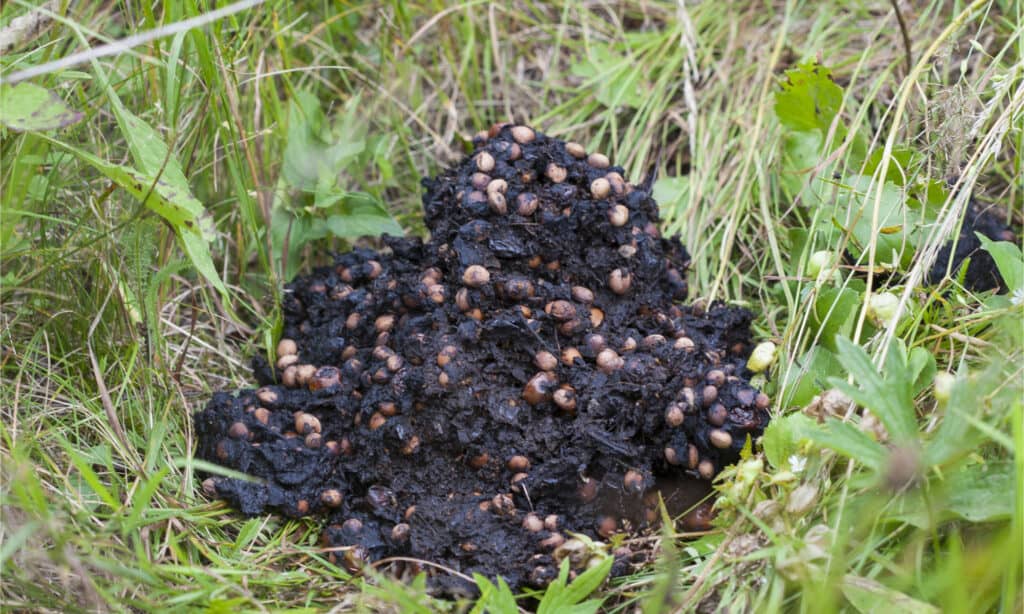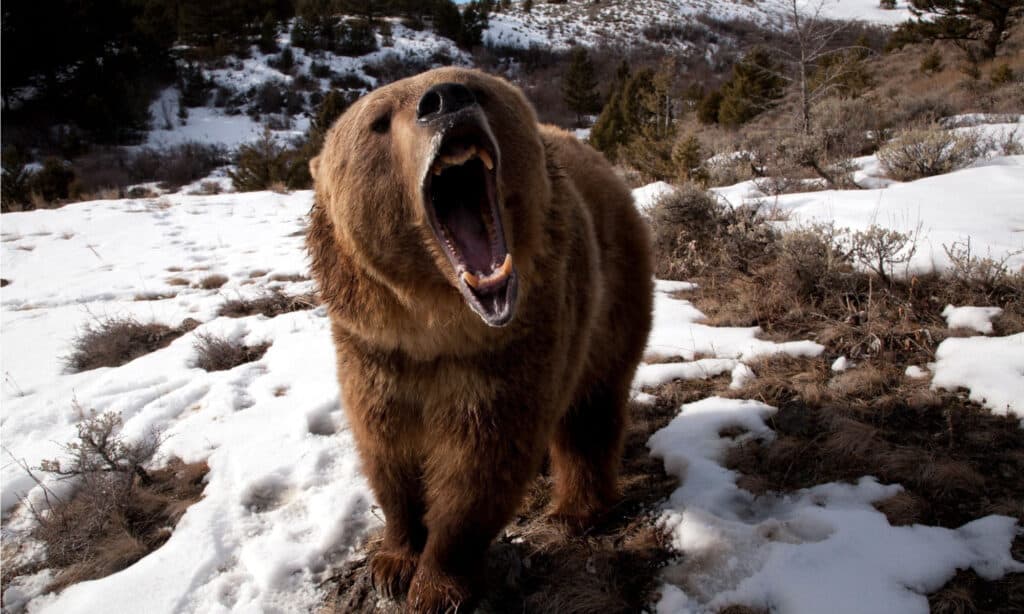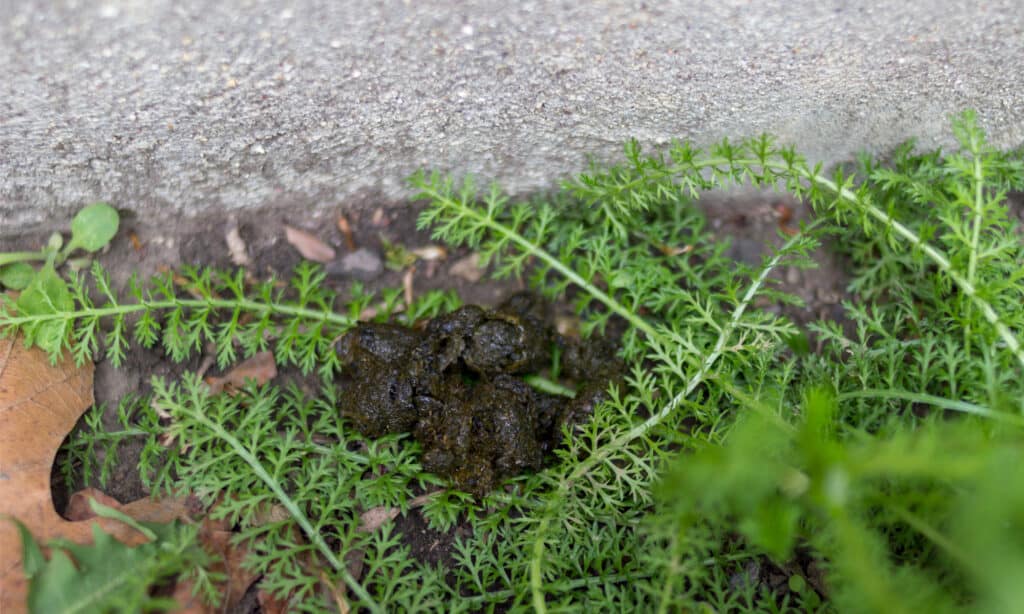Did you know that bear scats from one bear differs from another? When you stumble across some droppings on the route, you might be curious about what kind of creature they came from. How do you recognize bear poop? What does black bear scat look like compared to brown bear scat?
Bear scats from one bear may look significantly different from bear scats from another due to the diversity in their diets. On different days, the same bear’s poop may appear completely different. Depending on a bear’s diet, the scent of their poop varies.
For instance, a bear that eats a lot of berries will leave behind a fruity aroma that is not wholly offensive. The bear’s excrement will smell much worse if it consumes a lot of meat, though. Other than the way it smells, how does one determine the type of bear it belongs to? So, what does bear scat look like?
The next time you’re in bear country, recognizing bear scats can let you know whether there are any bears nearby. While we all love to enjoy nature and sightseeing in the wild, it’s always good to stay cautious and remain aware of your surroundings. Scan the ground for bear poop and other signs of bear, like scratch markings on tree trunks. It’s never a bad idea to watch what you may be stepping in and on!
This article will explore the question, “What does bear scat look like?” It will also explain how to identify bear scat from other droppings in the wild and more.
What Does Bear Poop Look Like?

Bear feces tend to be looser and larger in the late summer and early fall, with noticeable berries and apple fragments.
©Viktor Loki/Shutterstock.com
Generally, like their nutrition, bear scat’s color and composition vary with the seasons.
Bears consume a lot of grass and insects in the spring, which causes their excrement to frequently be green and cylindrical with grass visible. Bear scats tend to be looser and larger in the late summer and early fall, with noticeable berries and apple fragments.
However, to dive deeper into the bear scat world, you must first understand that different types of bears have different types of scat. The black bear and the grizzly bear, for instance, may have the same diet but varied droppings. Let’s take a look at the appearances of both bears’ scat.
Grizzly Bear Scats
It might be challenging to distinguish between grizzly bear scat and black bear scat because they are very similar. The scat from grizzly bears is often wider by 2 inches or more than the scat from black bears.
Shape, Size, and Smell
When the grizzly bear ingests plants in the spring and early summer, its scat is fibrous and cylindrical. The scat can become round when the bear consumes berries and turn black, wet, and foul-smelling when the bear switches to eating meat.
Color
When the bear consumes a varied diet, the color of its scat can range from black to brown to green as it consumes more vegetation.
Contents
The carcasses of moose, mountain goats, elk, sheep, and other animals can be found in grizzly scat, along with plants, roots, berries, and tubers. Fish fragments can also be found in the scat of coastal brown bears.
Black Bear Scat
Similar to human excrement but larger, the black bear scat is tubular, measuring 5 to 12 inches long and 1.5 to 2.5 inches wide. They are typically discovered around the base of trees, plants, or hiking trails.
Shape, Size, and Smell
Black bear scat frequently has a blunt end, slight taper, and a cylindrical shape. If the bear eats a lot of fruits and berries, its scat could seem like a loose “cow pile.” If black bears just ate fruit, nuts, acorns, or greenery, people are always surprised to learn that the bears’ waste does not smell bad.
Typically, the scent of black bear scat is similar to a slightly deteriorated version of whatever the bear consumed. In contrast to a bear who mostly consumes meat, the stench will be more tolerable if the bear’s diet consists mainly of strawberries, acorns, or nuts.
Color
Similar to grizzly bears, black bear scatcan vary from black to brown to green depending on its diet.
Contents
Black bear scat is frequently packed with plant material and bug fragments in the spring and early summer. Likewise, scat is produced as loose lumps packed with berries and seeds when the berry season arrives. As omnivores, bears may leave the remnants of small mammals like mice and rats along with their scat.
What Kind of Digestive System Do Bears Have?

Bears have a stomach, small intestine, and large intestine, which are all comparable to those found in humans.
©Perpis/Shutterstock.com
Bears may stand tall on two feet like humans; believe it or not, bears also share the same digestive system as we do. They have a stomach, small intestine, and large intestine, which are all comparable to those found in humans. Some items, such as seeds, fur, apple peels, and bones, will be present in their excrement, while others will digest in the bear’s stomach and not be seen in the scat.
How are Bear Scats Different From Other Mammal Droppings in the Wild?

Bear scat’s color and composition vary with the seasons.
©Falade Adewale/Shutterstock.com
Raccoons frequently use the same potty location, and hence, their feces are discovered in huge piles known as latrines. Coyote poop is also cylindrical and may include the same items as bear scat, while both bobcats and mountain lions poop in segments. Given the wide diversity of animals in the forest, it may be harder to identify which is bear scat and which isn’t. Below, we will distinguish bear scat from other animal droppings.
Bear Poop vs. Coyote Poop
Bear-like in shape but smaller in size, the coyote scat is cylindrical and is about 3 to 5 inches long and 3/4 inches wide. It is left behind as a tubular, knotted rope with a twisted end that sets it apart from the bear’s plain, blunt tubes. Coyotes frequently deposit their piles of scat in the middle of pathways as a territorial sign.
Bear Poop vs. Raccoon Poop
Raccoons frequently defecate in the same spot, leaving behind latrines brimming with waste. Only 2 to 3 inches long and half an inch wide, raccoon scat is pointed and tiny. Since raccoons are omnivores, their waste is full of insects, nuts, seeds, and hair.
Bear Poop vs. Bobcat Poop
As is typical for feline scat, bobcat scat is cylindrical like a bear’s but smaller, more circular, and divided. When you tread on it, it won’t compress because it is incredibly dense. The scat is 0.5 to 1 inch wide and 3 to 5 inches long. It also has hair and bones and berries, fruit, and grass. Additionally, you might notice a scrape from the bobcat’s attempt to hide its scat.
What Does Skunk Scat Look Like?

While a skunk’s poop smells pretty much like any other animal’s, the pungent musk they dispel could clue you in that you may be looking at skunk scat rather than bear scat.
©iStock.com/KathrynSK
If you’re catching a pungent scent in the air near that pile of scat you just found, it could have been delivered courtesy of a critter lurking about that has proven itself to be a nuisance in a really smelly way! If you fear that a skunk is in the vicinity, one surefire way to tell is by identifying its scat. Skunk scat can generally be found in mounds near their nesting areas and appears tubular in shape with smooth surfaces and blunt ends.
The scat is prone to fall apart if prodded with a stick and contains pieces of undigested material the skunk fed on–insect parts like beetles, berries, seeds, grass, etc. Spotted skunk scat measures 1-2 inches long with 1/2 -1 inch diameter, while hooded skunk scat is half the size. The feces can be either crumbly, mushy, or hard and range in color from black to dark brown to pale brown. Fresh scat will be moist, brighter, and darker, while older will be more crumbly and discolored.
The photo featured at the top of this post is © Andrei Preda/Shutterstock.com
Thank you for reading! Have some feedback for us? Contact the AZ Animals editorial team.






